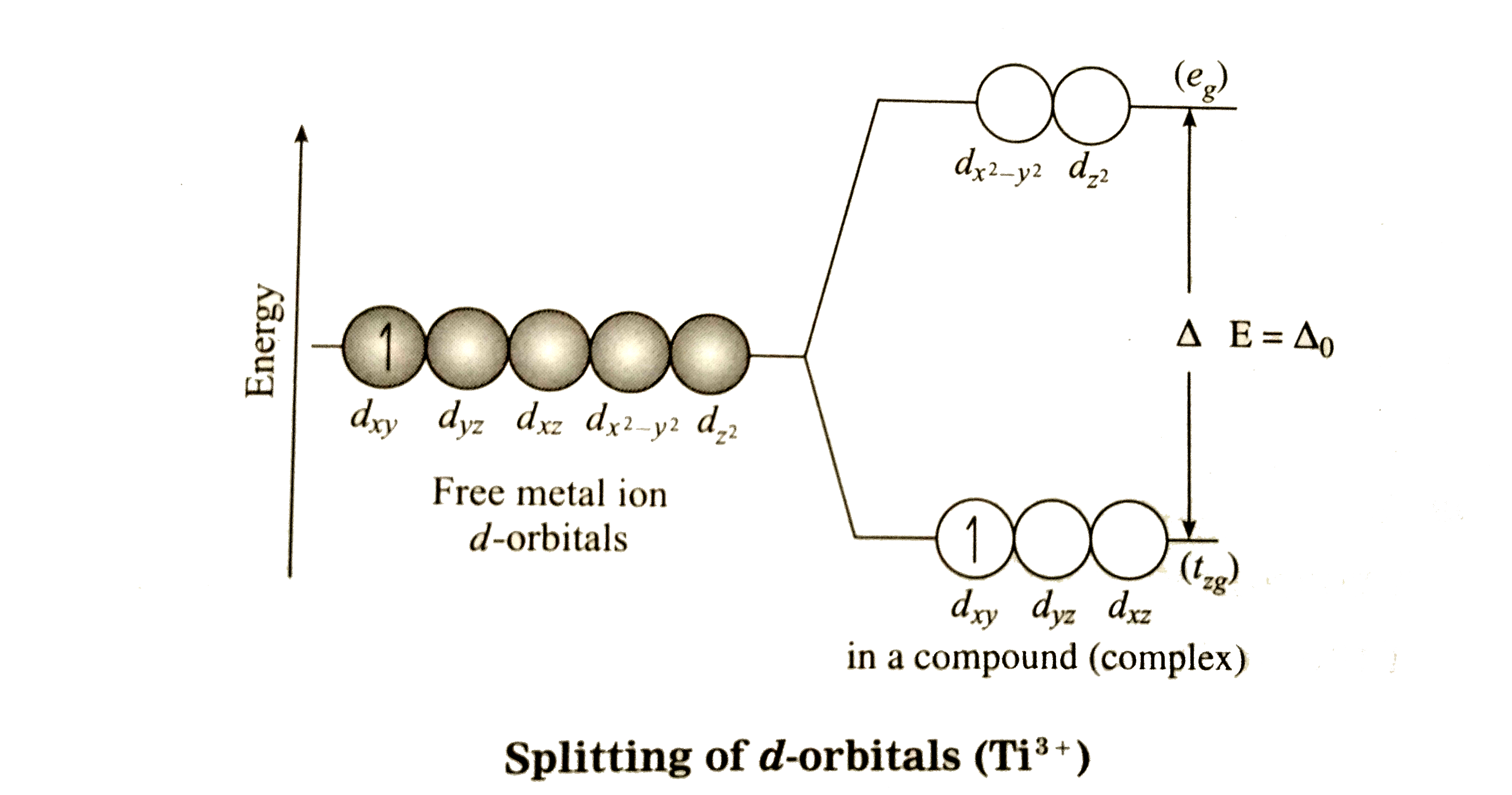How does a transition metal ion acquire a colour?
(1) The transition metal ions has have incompelety filled (n-1) d-orbitlas.
(2) d-orbitals are degenerte orbitals, i.e., all five suborbitals of d-orbitals namely dxy,dyz,dx2−y2,dz2 have nearly equal energy in a free metal ions.
(3) In compounds , in the pressnce of anions or complexing ligands, degenergy is lost and these five degenerate d-orbitals splits into two groups as follows.
(i) One group of d-orbitals have lower energy and consists of three orbitals namely dxydxy and dxy .They are called t2g orbitals .
(ii) The second group of d-orbitals have higher energy and consist two orbitals dx2−y2 and dz2 and they are called eg orbitals.

(4) They energy differenec ΔE between these two sets of d-orbitals is called crystal be field splitting energy (CFSE).
(5) ΔE has very small value equal to the energy of electromagnetic radiation in the visible region (ΔEhu=hcλ)
(6) There ariese a transition of one or more unpaired electrons form t2g orbitals to eg orbitals due to the absorption of radiation in the visible region.
(7) When the electron d-orbitals (t2g) it transmits the light that is complementary in colour to colour of radiation absorbed. This imparts a characteristic colour to the compound or a metal ion.
For example in the figure the transition of one elecrons (3d1) in the complex [Ti(H2O)6]3+ is shown.
Similar Questions
Which of the following transition metal ions is colourless ?
View SolutionColourless transition metal ion is
View SolutionThe aqueous solution of salt of a transition metal ion changes colour from pink to blue, when concentrated hydrochloric acid is added to it. The change in colour is due to:
View SolutionTransition metal compound are coloured due to d−d and charge transfer tranditoins, Colour due to d−d transition is shown by transition metal compounds having d1andd9 electrons whereas the compounds containing d0andd10 configurations are intensely coloured due to charge transfer transitions.
Which of the following compound is not colouredView SolutionWhich of the following transition metal ion is not coloured?
View SolutionIn which of the following transition metal ion complexes, the colour in not due to d-d transition?
View SolutionTransition metal ions show colour because
View SolutionTransition metal ions show colour because
View SolutionThe transition metal ions responsible for colour in ruby and emerald are, respectively :
View SolutionColour of transition metal ions are due to absorption of some wavelength. This results in
View Solution

